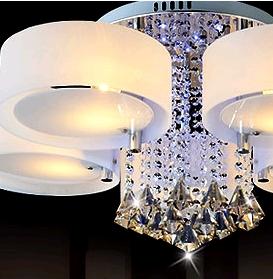
As we all know, LED lamps have become the new darling of the lighting market due to their advantages of low energy consumption, long life, good applicability, high safety, low seismic resistance, and low pollution. It is predicted that by 2015, the share of LED lamps in the lighting market will increase to more than 30%, becoming one of the most competitive mainstream light sources. With the explosive development of the industry, the current LED market has also shown a mixed bag, uneven quality, and even the emergence of substandard quality, coupled with the reasons for the original technology and technology, resulting in high overall cost prices and sales prices. Although the advantages of LED lamps are obvious, the technology still needs to be improved and improved. For example, the insulating layer is caused by epoxy resin and the heat dissipation is not high. The light failure rate is high and the service life does not reach the theoretical lifetime. The situation is also widespread, many products on the market color rendering index in the national standard below 80; voltage adaptability narrow and other technical defects.
Zhejiang Jingda Qitai Technology Co., Ltd. (hereinafter referred to as Qitai Qitai) adopts military technology, and the recently introduced new thermal conductive ceramic film-forming led lamp series effectively solves the above-mentioned deficiencies of traditional lamps and existing LED lamps, and in terms of product performance. Six revolutionary breakthroughs have been achieved, namely: light decay is smaller; use is safer; products are more environmentally friendly; life span is longer, application scope is wider, and energy saving is even better. The product has obtained a number of patents.
The person in the art knows that most of the current led lamps use aluminum substrates, aluminum substrates between the welding surface and the heat dissipation surface in order to solve the insulation and pressure resistance of the circuit and the heat sink, and add an insulating epoxy between them. Although the resin solves the problem of electrical performance, it directly leads to an increase in thermal resistance. The thermal conductivity of the aluminum substrate is generally between 0.2-0.8, which is still relatively high. It also affects the life of the product from a certain extent. Thai company adopts military technology and pioneers to replace the aluminum film and aluminum housing with ceramic film forming technology. The LED tube is directly welded on the ceramic substrate, and then the ceramic substrate is welded on the aluminum plate. The above two processes remove the ring. The role of oxygen resin and thermal plastic, LED thermal resistance greatly reduced. The lamps produced in this way have small thermal resistance and small temperature rise, which greatly prolongs the service life of LED lamps. The thermal conductive ceramics have both electrical insulation and thermal conductivity, and they also have rigidity and corrosion resistance, and also comply with the European Union's Restriction of Hazardous Substances Directive (RoHS). ) Environmental requirements.
Shenzhen Ever-smart Sensor Technology Co., LTD , https://www.fluhandy.com